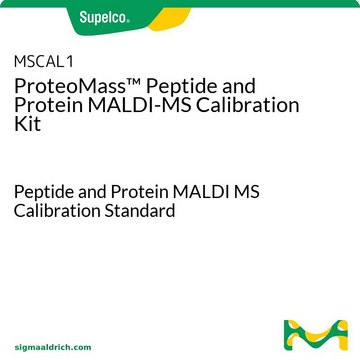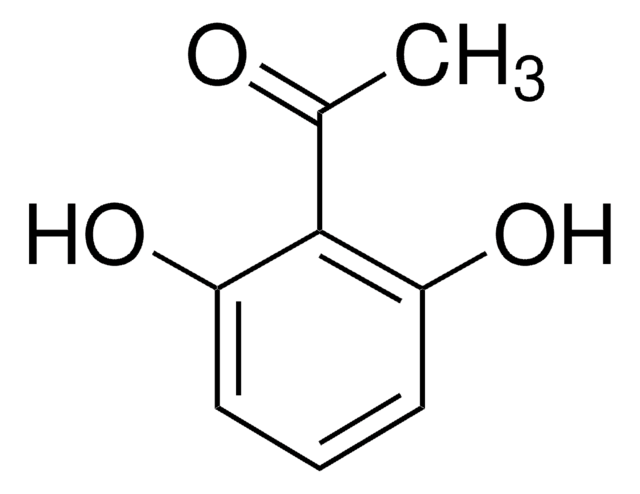94141
4-Chloro-α-cyanocinnamic acid
matrix substance for MALDI-MS, ≥95.0% (HPLC)
Sinónimos:
3-(4-Chlorophenyl)-2-cyano-2-propenoic acid, 3-(4-Chlorophenyl)-2-cyanoacrylic acid, p-Chloro-α-cyanocinnamic acid, p-Chlorobenzylidenecyanoacetic acid, ClCCA, NSC 2479
About This Item
Productos recomendados
grade
matrix substance for MALDI-MS
Quality Level
assay
≥95.0% (HPLC)
form
crystals
analyte functional class(es)
drugs of abuse, ionic liquids
analyte chemical class(es)
chlorinated lipids, lipids, peptides, phospholipids, phosphopeptides
technique(s)
MALDI-MS: suitable
solubility
methanol: 100 mg/10 mL, clear, colorless to light yellow
SMILES string
OC(=O)\C(=C\c1ccc(Cl)cc1)C#N
InChI
1S/C10H6ClNO2/c11-9-3-1-7(2-4-9)5-8(6-12)10(13)14/h1-5H,(H,13,14)/b8-5+
InChI key
MXCRRKYUQNHWLJ-VMPITWQZSA-N
¿Está buscando productos similares? Visita Guía de comparación de productos
Application
- suitable as MALDI-Matrix material
- suitable for collision-induced dissociation MS/MS (CID-MS/MS)
Related product
signalword
Danger
hcodes
Hazard Classifications
Acute Tox. 3 Oral - Acute Tox. 4 Dermal - Acute Tox. 4 Inhalation
Storage Class
6.1C - Combustible acute toxic Cat.3 / toxic compounds or compounds which causing chronic effects
wgk_germany
WGK 3
flash_point_f
Not applicable
flash_point_c
Not applicable
Elija entre una de las versiones más recientes:
Certificados de análisis (COA)
¿No ve la versión correcta?
Si necesita una versión concreta, puede buscar un certificado específico por el número de lote.
¿Ya tiene este producto?
Encuentre la documentación para los productos que ha comprado recientemente en la Biblioteca de documentos.
Los clientes también vieron
Nuestro equipo de científicos tiene experiencia en todas las áreas de investigación: Ciencias de la vida, Ciencia de los materiales, Síntesis química, Cromatografía, Analítica y muchas otras.
Póngase en contacto con el Servicio técnico
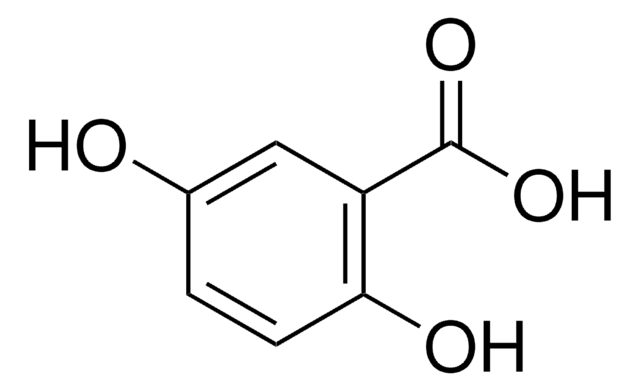
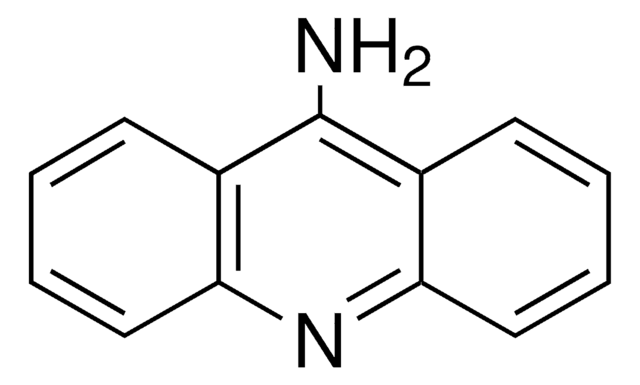
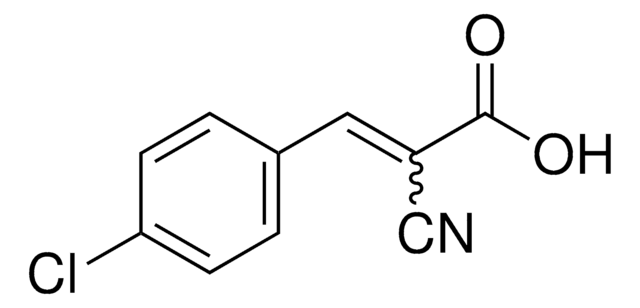
![trans-2-[3-(4-tert-Butylphenyl)-2-methyl-2-propenylidene]malononitrile matrix substance for MALDI-MS, ≥99.0% (HPLC)](/deepweb/assets/sigmaaldrich/product/structures/249/587/f8021369-f65a-413d-887d-3c8a4d2a248f/640/f8021369-f65a-413d-887d-3c8a4d2a248f.png)

